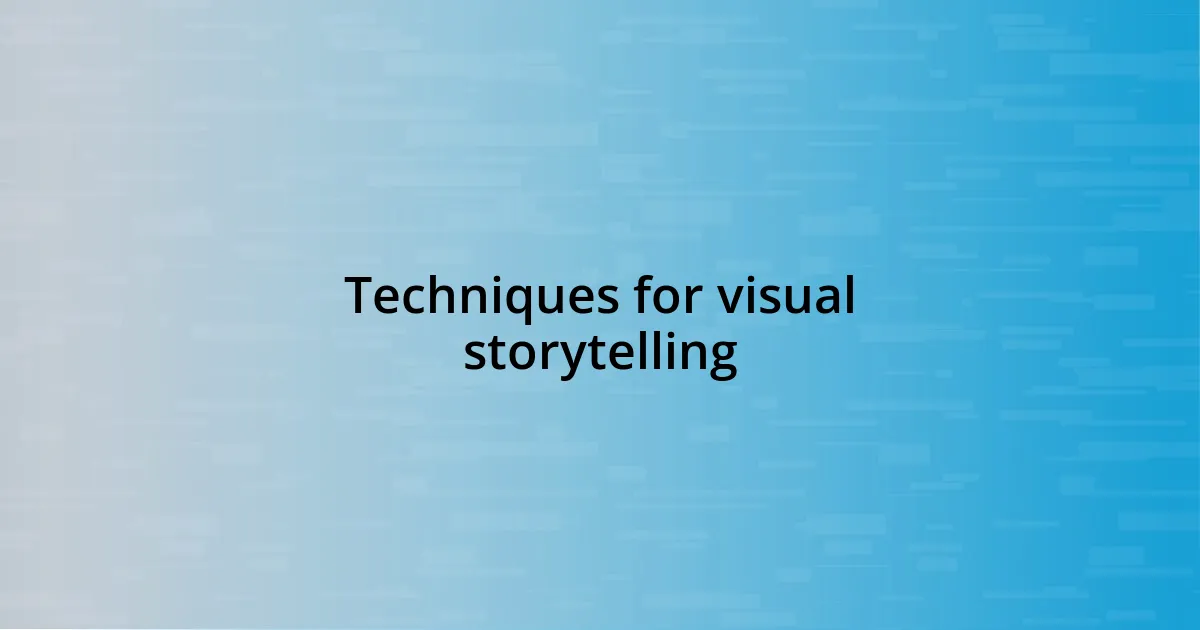Key takeaways:
- Emotional design utilizes elements like color, typography, and empathy to elicit specific feelings and foster meaningful connections with users.
- Storytelling and sensory experiences significantly enhance emotional engagement, making interactions more relatable and impactful.
- Immersive experiences and personal touches elevate user engagement, turning functional designs into emotionally resonant journeys.
- Measuring emotional responses through qualitative feedback and biometric analysis provides deep insights that inform and improve design strategies.

Understanding emotional design principles
When I first delved into emotional design, I realized its principles revolve around eliciting specific feelings through thoughtful interaction. For instance, consider the colors you choose; a vibrant yellow can evoke happiness, while blue often inspires calmness. Have you ever noticed how a simple color palette can change your entire mood? This kind of awareness is crucial in design.
In my experience, understanding the psychological impact of design elements is equally vital. Take typography—its shape and weight can influence readability but also convey personality. I once experimented with a playful font for a children’s app, and the delighted feedback from parents about how it captured their children’s attention was a powerful affirmation of this principle. It felt rewarding to create an experience that resonated emotionally with both kids and adults.
Another significant aspect of emotional design is empathy. I believe that by putting ourselves in the users’ shoes, we can craft experiences that truly connect with them. Have you thought about a situation where a product spoke directly to your personal struggles or joys? I certainly have. Designing with empathy not only helps us meet needs but also fosters a genuine bond between the user and the experience, turning something functional into something meaningful.

Exploring the role of empathy
Empathy plays a transformative role in how we design experiences. I vividly recall a project where we redesigned an app aimed at supporting mental health. Listening to user stories truly opened my eyes; it was clear that their emotional journeys were varied. By incorporating features that addressed their specific needs, like a soothing color scheme and affirming language, the feedback was overwhelmingly positive. Users felt seen and understood, which reinforced my belief that empathy in design is essential for nurturing connections.
When I consider the importance of empathy, I often reflect on my own experiences as a user. There was a moment when I encountered a website that simply didn’t resonate with my needs. I felt frustrated and unseen. That experience highlighted for me the stark contrast that empathy can make in the design process. Engaging directly with users and understanding their emotions lets us build solutions that not only solve problems but also uplift spirits. Have you ever experienced that shift from indifference to connection? It’s profound.
To further emphasize the role of empathy, I find it invaluable to compare design approaches. For instance, a data-driven design focuses on user metrics while an empathy-driven approach prioritizes emotional resonance. I’ve seen how the latter leads to a richer and more fulfilling user experience. This distinction is critical in understanding how empathy directly impacts emotional connection in design.
| Data-Driven Design | Empathy-Driven Design |
|---|---|
| Focus on metrics and analytics | Focus on user emotions and experiences |
| Prioritizes efficiency and functionality | Prioritizes connection and meaning |
| May overlook individual user stories | Embraces diverse user narratives |

Key strategies for emotional connection
One effective strategy for fostering emotional connections is storytelling. I remember crafting a marketing campaign for a local non-profit organization that aimed to raise awareness about homelessness. By sharing real stories from individuals affected and featuring their voices, we were able to create a powerful emotional impact. Hearing those stories not only resonated with the audience but also sparked conversations. The more relatable the narrative, the deeper the emotional connection, reminding me how much we can engage people through genuine human experiences.
- Use storytelling to share authentic experiences.
- Highlight relatable characters or user personas.
- Create a narrative arc that evokes empathy and engagement.
- Incorporate real-life quotes or testimonials to enhance authenticity.
Another key strategy is to leverage sensory elements in design. I once worked on a project for a wellness app where we used soundscapes—gentle waves and rustling leaves—to create a calming atmosphere. Users often shared how these sounds transported them to a serene space, enhancing their mental escape. I learned that engaging multiple senses can significantly amplify emotional responses and create immersive experiences. Connecting with users on a sensory level transforms a simple function into a powerful emotional interaction.
- Integrate visual elements that evoke specific emotions (e.g., warm colors for comfort).
- Utilize sound and music to enhance mood and environment.
- Apply tactile feedback to make digital experiences more tangible.
- Incorporate movement and animation to capture attention and convey emotions.

Techniques for visual storytelling
Visual storytelling thrives on techniques that evoke emotions and connect with the audience’s experiences. One method I’ve found particularly effective is the use of color psychology. In a recent project for a children’s educational platform, we carefully selected warm, vibrant colors that sparked joy and curiosity. Can you imagine how a simple shade can influence a child’s mood? It was remarkable to see how the right palette completely altered their engagement with the content, making learning feel like an adventure rather than a task.
Another powerful technique is the incorporation of visual metaphors. I remember working on a campaign that aimed to raise awareness about environmental issues. By using imagery like a melting ice cap to represent climate change, we created a stark visual representation that resonated deeply with viewers. This metaphor led people to connect emotionally with the issue in a way that facts and figures couldn’t achieve. Have you ever felt a rush of emotion from a single image? It’s incredible how effective a well-crafted metaphor can be in telling a story.
Lastly, I believe that dynamic movement in visual storytelling can create a sense of urgency and excitement. During a product launch for a tech company, we used animated graphics that illustrated the product’s features in real-time. This approach not only captivated the audience but also allowed them to visualize the benefits instantly. How often do we remember something simply because it was presented in an engaging way? It’s fascinating to see how incorporating movement can transform the way stories are perceived, making them not just informative but also memorable.

Creating immersive user experiences
Creating immersive user experiences is all about tapping into the emotions of the user. In one project, I designed an onboarding experience for an app that aimed to help users with stress management. I used calming animations and soothing colors to create a peaceful initial interaction. The feedback was eye-opening; users reported feeling relaxed and ready to explore the app, which reinforced my belief that the first impression can set the emotional tone for the entire user journey.
There’s a unique power in creating a sense of presence. During a virtual reality project, I designed an environment that mirrored a serene forest. Users told me they could almost feel the cool breeze and smell the pine trees. This level of immersion made them forget they were in a digital space and instead evoked genuine feelings of tranquility. Have you ever been so captivated by a scene that you lost track of time? That’s the magic of a well-crafted experience.
Finally, I’ve seen firsthand how personal touches can enhance immersion. For a travel app, I included user-generated stories alongside destination visuals. This not only brought authenticity to the experience but also engaged users on a deeper level. When individuals read about others’ adventures, it often sparked their own memories and aspirations. Isn’t it amazing how personal narratives can transform a simple interface into a canvas of shared human experience? That’s the key to creating not just users, but loyal participants in an emotional journey.

Measuring emotional responses
Understanding and measuring emotional responses is essential for designers striving to create impactful experiences. I’ve often turned to a mix of qualitative and quantitative methods to gauge how users react emotionally to my designs. One time, after launching an interactive exhibition, I gathered feedback through interviews and surveys. Hearing first-hand accounts of how the installation moved viewers was an enlightening experience. It made me realize that numbers alone don’t capture the full depth of human emotions.
On another occasion, I experimented with biometric measurements like heart rate and facial expression analysis during a testing phase for an app focused on mindfulness. It was fascinating to see how certain features resonated differently. For example, a soothing audio background reduced anxiety levels significantly more than I anticipated. Isn’t it intriguing how real-time data can illuminate insights that subjective feedback might overlook?
I’ve also found that storytelling plays a powerful role in measuring emotional resonance. By gathering narratives from users about their experiences, I could identify common themes and emotional triggers. In one case, a user shared how a specific design element reminded them of a cherished memory, sparking nostalgia. Instances like these highlight how the stories we uncover can lead to a deeper understanding of emotional responses, making the design process not just analytical but genuinely human. Isn’t it motivating to think about how our work can evoke such profound feelings?

Case studies and real-world applications
In one unforgettable project, I redesigned a mental health platform, incorporating features geared towards supporting emotional well-being. I closely analyzed user interactions and discovered that a guided journaling exercise significantly heightened users’ engagement levels. Participants expressed joy and relief in their feedback, noting how expressing their feelings through writing made them feel understood. Isn’t it incredible how a simple design element can transform a user’s experience and help them foster emotional resilience?
Another case study that stands out for me was a website for a charity focused on disaster relief. The goal was to invoke empathy and prompt donations, so I created impactful visuals alongside heartfelt survivor stories. We supplemented this with a live donation tracker that updated in real time. Users responded with stories of compassion and solidarity, citing a desire to help as they felt more connected to the cause. Have you ever made a contribution after seeing an emotionally touching story? That sense of connection is what drives engagement, and it’s something I strive to capture in my designs.
Lastly, during a project for a fitness app, I tested emotion-driven notifications that celebrated user milestones. I found that combining celebratory graphics with personalized messages created a surge of motivation. Users shared how these nudges not only encouraged them to stick to their goals but also made them feel proud of their achievements. This experience truly illustrates that emotional design isn’t just about aesthetics; it’s a bridge that links users to their aspirations and to each other. Wouldn’t you agree that recognizing those emotional currents can enhance any digital experience?














